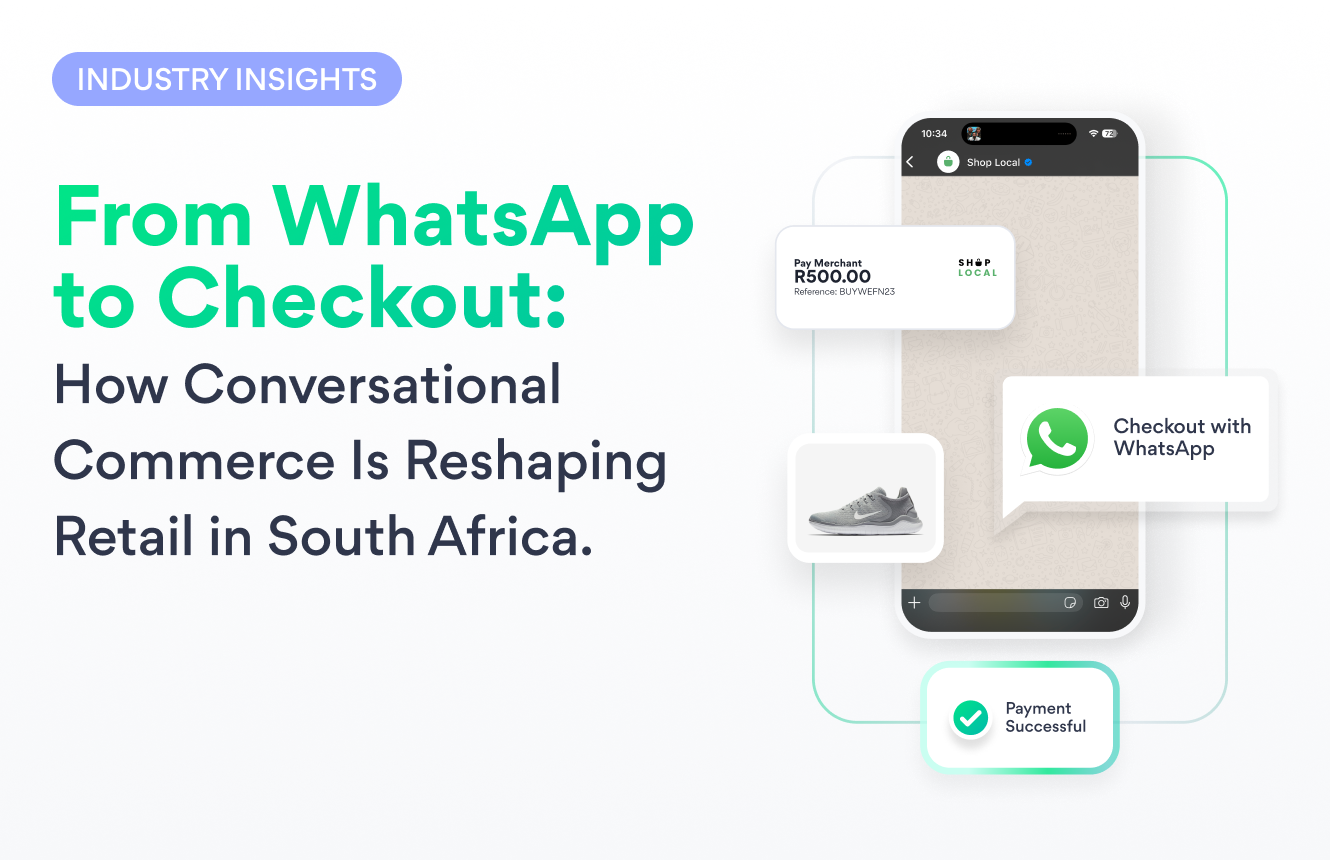.png)
According to a report by The World Bank, 1.4-billion people remain unbanked globally.1 The reality is that many people across the world still don’t have access to adequate financial services. But the unbanked are more than just underrepresented customers in the financial space, they also include informal traders who don’t have access to vital business solutions.
According to a report conducted by Trade Intelligence, informal trading in South Africa was valued at R164-billion in 2020, a staggering figure on its own.2 But the report also found that 77% of the nation's population visited informal traders or SMEs, showing the scale of this sector of the economy.
.png)
An overview of the informal sector
In South Africa, a significant portion of the population face socio-economic challenges, seemingly leaving them with only two options: Unemployment, or seeking work in the informal sector. According to Statista, approximately 4.8-million individuals are employed in the informal sector in South Africa.3 While this is a large figure on its own, a report by Reuters shows that 42% of South African’s remain unemployed.
These challenges aren’t unique to South Africa, as other African countries also face similar challenges. According to a report by the International Labour Organization, a staggering 60% of the world's working population is engaged in the informal sector with almost all of them employed within emerging and developing economies, highlighting the widespread nature of this issue throughout the continent.4
With so many individuals employed by this sector, or running businesses within it, how money changes hands is vital. This is particularly important, given that there aren’t many checks and balances to protect the customer or the business, as in traditional businesses.
Yet the sector is currently dominated by cash transactions, which come with a host of potential problems, including vulnerability to theft.
This is where peer-to-peer payment systems can make a major impact. They not only provide customers and merchants with a transparent transactional system, they also provide a better way for both parties to handle funds.
Peer-to-peer payments vs cash
In many economies, exchanging physical cash is still a common occurrence as it’s an easy form of transacting. With the rise in peer-to-peer payment services, it’s become easier and more secure to transact digitally, especially with the increased adoption rates of smartphones.
With the speed of innovation in technology, third-party payment providers (TPPP) are continually evolving to offer better, more convenient ways to transact for businesses and customers alike.
With TPPPs such as Ozow, there’s no need to store physical cash on site in locations that aren’t secure. Aside from addressing this key security concern, peer-to-peer payment services also tackle issues that include:
- Speed: And the need to double check any money during a transaction to ensure the amount is correct
- Convenience: Removes the need to have the exact amount of money on hand for purchasing or for giving change
- Accessibility: While not many may have money on hand for various reasons, most people carry a smartphone
The impact of these systems goes far beyond convenience – they can change the way entire nations handle money. Case in point: India and Brazil.
.png)
The impact of peer-to-peer payments around the world
In 2020, accelerated by the effects of the global pandemic, Brazil’s Central Bank launched their real time payment service, known as Pix. The payments service has been widely adopted throughout the country. In a recent report conducted by Mordor Intelligence, Pix’s payment volume is equivalent to 80% of debit and credit card transactions within the country.5 The service has enabled 40 million people to make their very first bank transfer.
On the other side of the globe, India underwent a demonetisation period of some of their bank notes between 2016 and 2017. This resulted in many of its citizens being in very difficult situation, since their economy is largely cash based. However, this issue ultimately forced the hand of innovation and served as a catalyst to the widespread adoption of digital wallets.
These innovations included Pay Through Mobile (Paytm), Google’s Tez (now known as Google Pay) and PhonePE to name just a few. These systems however rely heavily on an innovation by the Reserve Bank of India known as a Unified Payments Interface (UPI), which was launched by the National Payments Corporation of India. It can be likened to our own innovation here in South Africa known as PayShap, a Rapid Payments Programme (RPP) initiative launched by BankservAfrica, the country’s financial clearing house.
These are just a few examples of successful collaborations between multiple entities, such as private, public, or governmental bodies. In a South African context, we have SARB’s Vision 2025 which forms part of a larger goal by the national government to improve financial inclusion within the country. The PayShap initiative emerged from this vision. Gary Stone, Ozow’s Head of Head of Regulatory and Payments, and also the former Head of Electronic Payments at BankservAfrica, touched on the key benefits of the program:
.png)
“One, it makes cheaper payments infrastructure and payments capabilities available to the underbanked. And two, it facilitates other use cases which aid in reducing the dependency on cash availability at a micro-level – for instance small cash transactions such a taxi fares, parking tickets, tips, ad hoc groceries, and more can be paid for using RPP.”
He also went on to mention, “It’s a system which is simple, low cost, real time, widely acceptable, irrevocable and an accepted medium of exchange.”
The future of peer-to-peer in South Africa
With the vision in mind, the South African government has turned to the private sector to help achieve the shift away from cash. But this can only be done through collaboration between the major stakeholders.
.png)
Ozow's commitment to bridging the gap between the underbanked is an ongoing endeavor. Through the utilization of cutting-edge technology and the collaboration of highly capable teams, we aspire to make a significant impact and contribution to the realization of the SARB’s Vision 2025. By providing accessible and efficient peer-to-peer payment solutions, we aim to empower individuals in the informal economy, enabling them to participate fully in the financial ecosystem.
Citations
1The World Bank (Jul, 2022).
2Trade Intelligence (Sep, 2020).
3Statista (Apr 2023).
4International Labour Organization (Apr, 2018).
5Mordor Intelligence (2023).
-
Staff Writer








